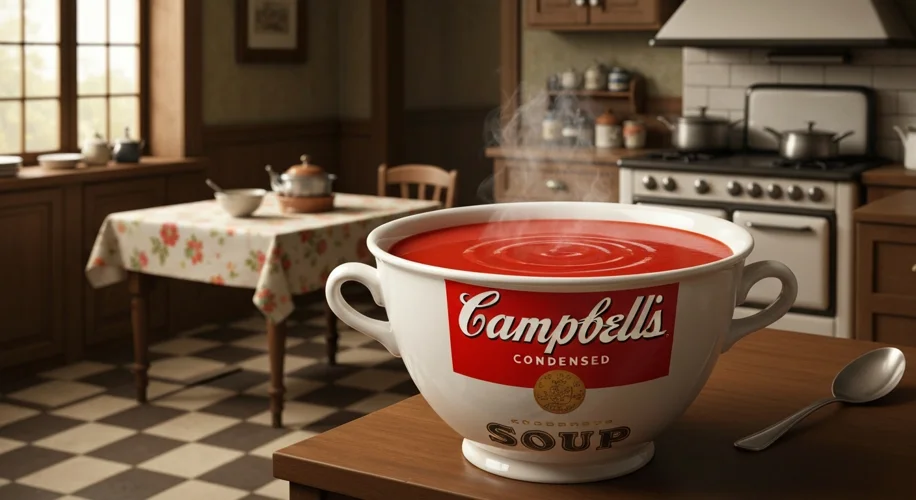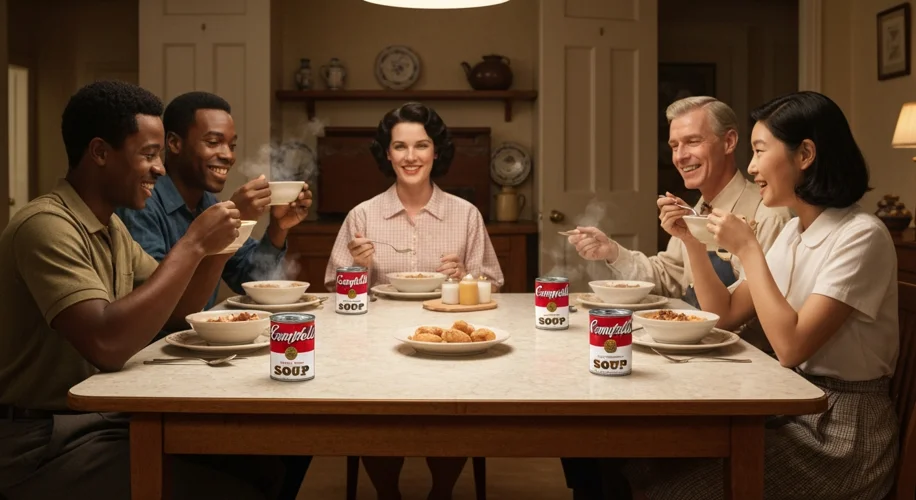In the annals of American culinary history, few brands evoke as strong a sense of nostalgia and familiarity as Campbell’s Soup. Its familiar red and white label is more than just a logo; it’s a symbol of home, comfort, and resilience that has graced countless tables for over a century. But how did this seemingly simple canned soup rise to such iconic status, weaving itself into the very fabric of American life?
Our story begins in the crisp autumn of 1869, not with a soup, but with a vision. Joseph A. Campbell, a fruit merchant, and Abraham Anderson, an icebox manufacturer, joined forces in Camden, New Jersey, to form the ‘Joseph Campbell Preserve Company.’ Their initial venture was diverse, producing canned tomatoes, vegetables, jellies, and even mincemeat. The era was one of burgeoning industrialization in America, a time when new technologies promised to transform how people lived, worked, and ate. Anderson’s expertise in refrigeration and Campbell’s business acumen laid the groundwork for a company that would master the art of preservation.
The true turning point, however, arrived in 1897. Enter John T. Dorrance, a chemist who would revolutionize the company’s fortunes and, in turn, American kitchens. Dorrance, seeking to create a more convenient and affordable condensed soup, developed a formula for condensed tomato soup. His innovation was genius: by removing most of the water, the soup could be transported more cheaply and efficiently, and consumers could reconstitute it at home with water or milk. This was a game-changer in an era where fresh ingredients were not always readily available, especially in rapidly growing urban centers and for those on modest incomes.

The early 20th century saw Campbell’s soup solidify its place in American households. The distinctive red and white label, first introduced in 1898, became instantly recognizable. The company understood the power of advertising, employing clever slogans and imagery that resonated with the public. ‘Campbell’s, Soup and Salad, and a Dessert for 30 Cents’ became a common refrain, highlighting the affordability and convenience of their products. But it was their strategic marketing during times of hardship that truly cemented their legacy.
During the Great Depression, when many families struggled to put food on the table, Campbell’s condensed soup offered a lifeline. It was a warm, nourishing meal that was accessible to almost everyone. The company didn’t shy away from this role; their advertising often spoke to the need for economical yet wholesome food. Post-World War II, with a growing middle class and suburban expansion, Campbell’s continued to be a symbol of domesticity and ease. Its presence in the pantry became a given, a comforting constant in a rapidly changing world.
The cultural impact of Campbell’s Soup cannot be overstated. It moved beyond mere sustenance to become an icon. Andy Warhol’s famous Campbell’s Soup Cans series in 1962 elevated the product to the realm of high art, reflecting and commenting on the mass-produced, consumer-driven culture of America. His work highlighted how a simple, everyday object had become so ingrained in the collective consciousness that it was immediately recognizable, even when presented in a gallery.

Beyond tomato soup, Campbell’s diversified its offerings, introducing Cream of Mushroom, Chicken Noodle, and countless other varieties, each becoming a staple in its own right. Chicken Noodle Soup, in particular, became synonymous with treating a cold, its warmth and familiar taste a balm for the sick. This solidified its role not just as a convenience food, but as a comfort food, deeply tied to personal well-being and care.
Innovation continued, with the introduction of condensed cream soups, a foundational ingredient in many casseroles and “green bean casserole” recipes that became quintessential American dishes, especially during holiday seasons. This demonstrated Campbell’s ability to adapt and remain relevant across generations, offering not just soup, but the building blocks for beloved family recipes.

Today, Campbell’s Soup continues to evolve, responding to changing dietary trends with lower-sodium options and plant-based varieties. Yet, its core appeal remains. It is a testament to the power of consistent branding, strategic marketing, and the enduring human need for comfort and familiarity. From its humble 19th-century origins to its status as a global icon, Campbell’s Soup is more than just a canned product; it’s a delicious chapter in the grand story of American life.

